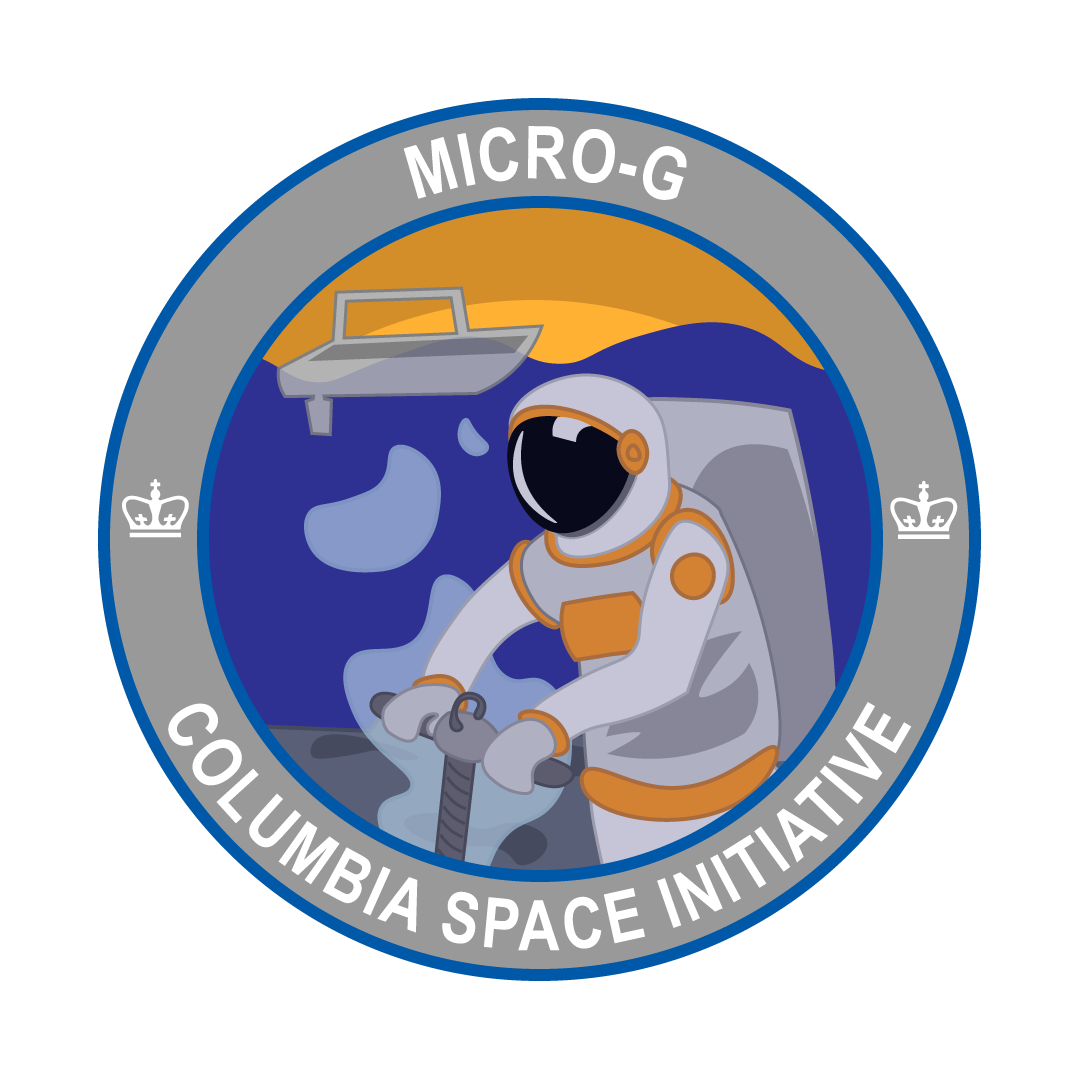
Extravehicular activities (EVAs) are essential to maintaining the ISS and often a highlight for astronauts. During EVAs, astronauts carry multiple tools that must be securely stowed, typically on the Mini Work Station (MWS) swingarms at the hip. Current stowage methods require dedicated actuation, which can be cumbersome during long EVAs with limited mobility. All stowage systems must meet single-fault tolerance to prevent tool loss, which could jeopardize mission objectives.
This year's objective is to design a glove-compatible EVA tool dock that enables one-handed installation without touching the receptacle or requiring dedicated actuation. Despite this, the dock must retain tools with single-fault tolerance—requiring two distinct actions to release. Ergonomics are critical, as astronauts operate with restricted movement in bulky suits. The design will be evaluated in NASA’s Neutral Buoyancy Laboratory (NBL) for functionality and operational feasibility.
Develop a passive capture tool deck with dual-release fault tolerance, one-handed actuation, and glove friendly ergonomic interface.
Ensure members are engaged and learn critical skills to ensure technical proficiency in a variety of disciplines.
Be selected to go to the Johnson Space Center Neutral Buoyancy Laboratory to test the device.
General CAD modeling skills
Human factors engineering
Prototyping/Manufacturing
Proposal Writing
Selected to test in the Neutral Buoyancy Lab for ten (10) years
Successfully designed several tools that completed rigorous testing by a NASA diver
CSI’s 2024 Micro-g tool, the SEE LION, was an autonomous camera and computer system that utilized image recognition model techniques to identify objects present during an unassisted egress scenario from the Orion capsule (astronauts floating wearing an underarm life preserver, astronaut multi-person life raft, etc). The mechanism was required to be built using off-the-shelf hardware, splash-proof for poolside testing, and operate within an allotted time.
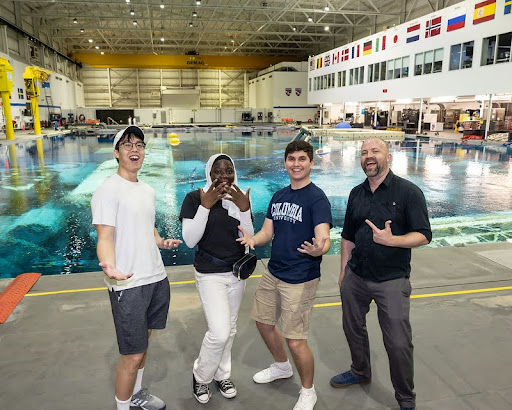
Throughout the development of the SEE LION, a large emphasis was placed on ensuring a smooth and straightforward user experience due to the time-sensitive nature of retrieving astronauts upon returning to Earth. The system, consisting of a tripod-mounted camera, a pelican case containing the necessary computing resources, a laptop with a dedicated user interface for the system, and a secondary monitor, was ideated to minimize the complexity of the tool and allow the operator to quickly set up the SEE LION with simple instructions.
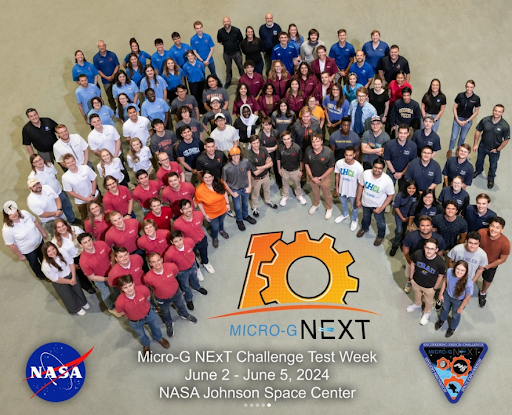
Our year-long project culminated in our team traveling to NASA’s Neutral Buoyancy Laboratory (NBL) in Houston, Texas. At the NBL, we were invited on multiple tours that spanned the buildings housing Artemis Program space shuttles and equipment to old Apollo and Soviet space systems. Additionally, we spent time at Mission Control watching the controllers in real time and working with people on the ISS, which was an exciting experience. As the week progressed, our SEE LION was tested at the Neutral Buoyancy Laboratory pool, undergoing strict procedural checks to maintain the highest levels of safety and accuracy. Through daily testing and troubleshooting, we successfully identified three of the four objects at the NBL with a high confidence of identification. As our session at the NBL started winding down, we connected with the Micro-G team at UT Dallas and bonded over some iconic Texas barbeque. It was a satisfying experience and a wellworth trip for all of us, receiving important feedback from NASA and meeting some amazing individuals. We can’t wait for the next chance to return to NASA with a new team!
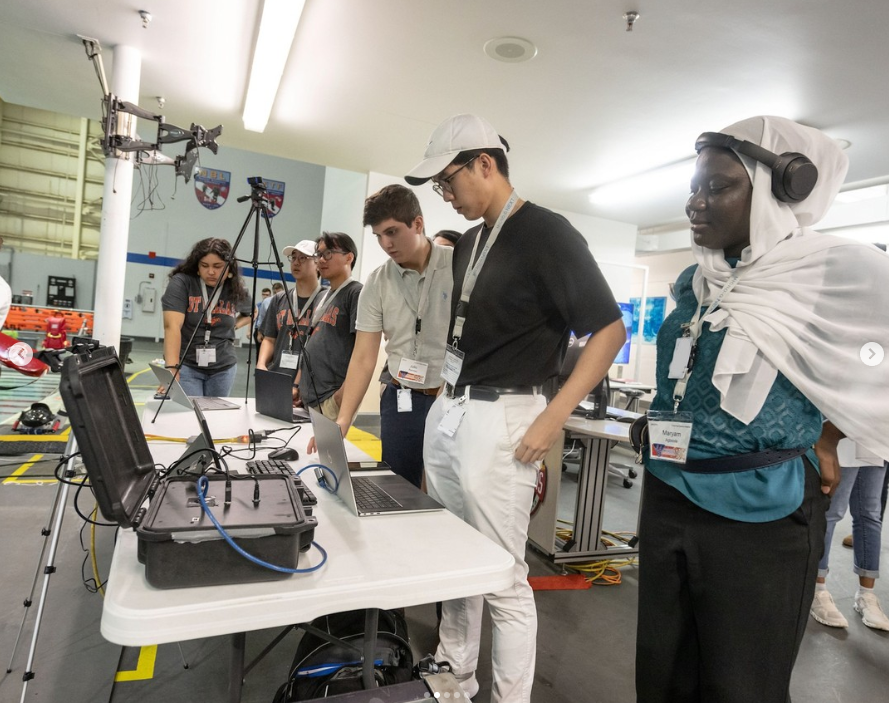
– Micro-g Team
CSI’s 2022 Micro-g tool, LionLatch, was designed as a gripping and anchoring mechanism for use on the lunar surface during NASA’s upcoming Artemis missions. This year’s challenge asked teams to design and manufacture an anchoring mechanism able to provide holding force on a variety of objects with different types of faces. The mechanism was required to work in the dusty, microgravity environment of the lunar surface, and had to be purely mechanical, not utilizing any sort of electronic aid or chemical adhesion.
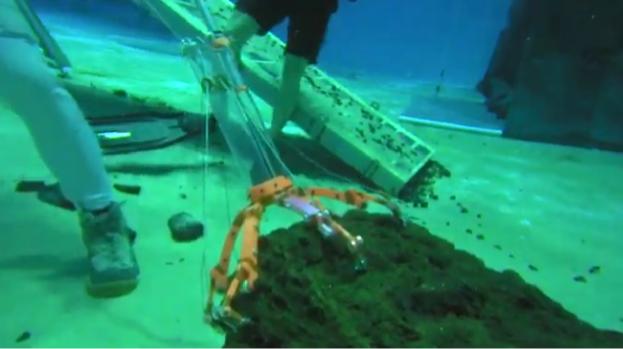
In designing this year’s tool, the LionLatch team focused on the astronaut experience, endeavoring to create a design that was simple to use and that required minimal effort to actuate. The design, which can be used comfortably from a standing position, is manipulated with one simple pull of a handle. It consists of six identical legs, dubbed “macrospines” for their likeness to traditional microspine technology. Each leg has several joints that can navigate around rocks of varying sizes and textures, as well as a roller to aid in the actuation process. All six are pulled into a gripped position by passive spring forces acting on each joint, meaning there’s no need for astronauts to actively grip their targets. The pads on the end of each macrospine are also coated in gecko gripper material, which leverages biomimicry and Van Der Waals forces to provide non-sticky friction during the gripping process.
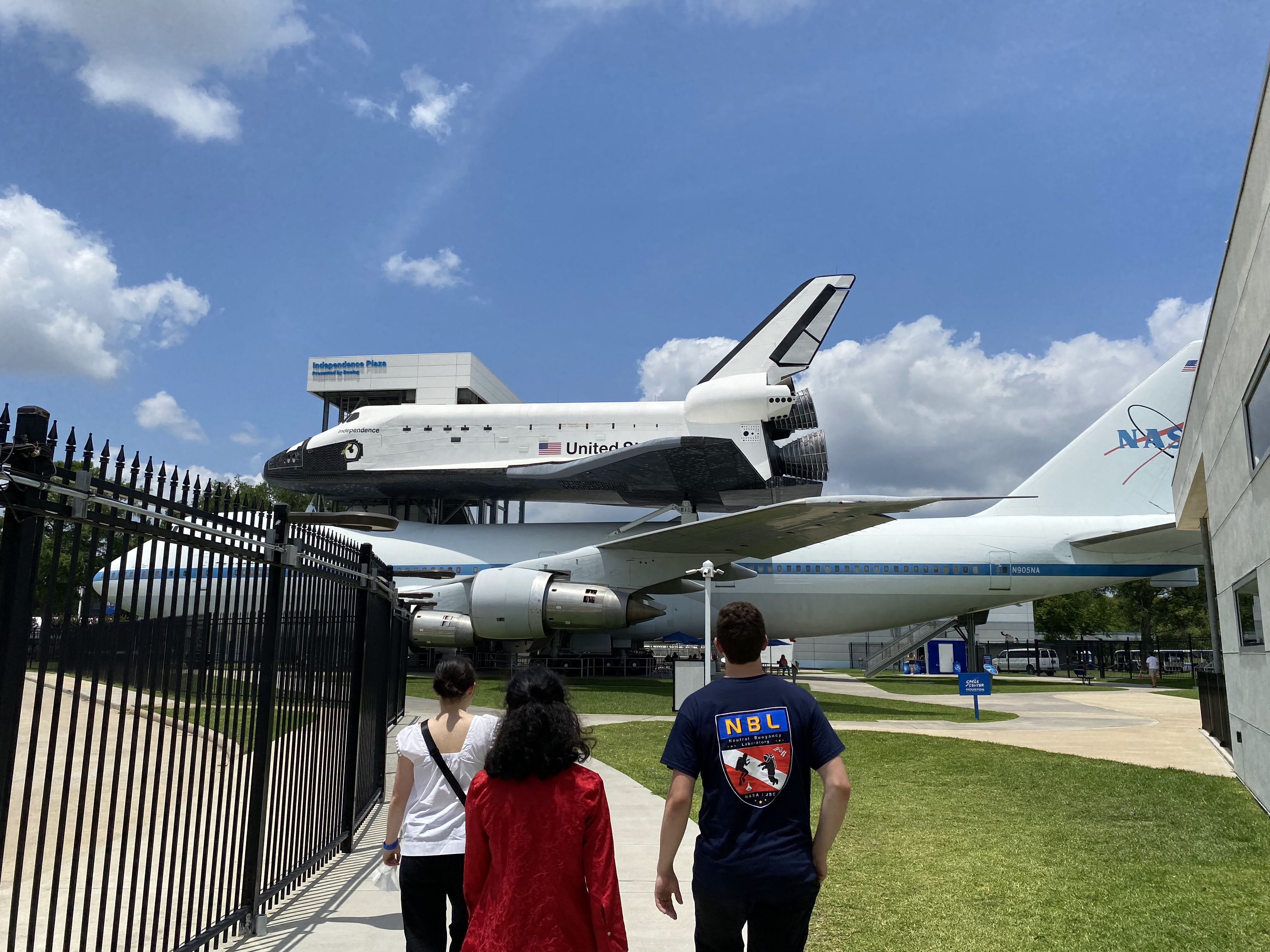
After a year’s worth of design, development, and manufacturing, the LionLatch team traveled to NASA’s Neutral Buoyancy Laboratory (NBL) in Houston, TX in June 2022. Over the course of testing week, we toured NBL facilities, gave presentations on our design, and worked alongside a diver to test our design in the NBL pool’s simulated microgravity. Our time in Houston was a rewarding learning experience, and we’re thankful for the opportunity to learn from seasoned engineers and to see many crucial aspects of NASA firsthand! It was a satisfying end to a successful year, and we’re grateful for the feedback we received, conversations we were a part of, and individuals we met. Until next time!
– Team LionLatch
NASA’s Micro-g NExT Challenge is an annual competition for undergraduate students to design, build, and test tools that address current space exploration challenges faced by astronauts in microgravity environments. This year, the challenges all focused on aspects of the Artemis program—NASA’s upcoming lunar mission—to address issues such as sample collection and dust tolerance in a lunar environment.
CSI’s 2020 Micro-g NExT team, Lion Core, participated in the Lunar Sample Coring Device project proposed by NASA’s Jet Propulsion Laboratory, designing a drill bit to collect core samples of lunar regolith. We began the design process in early September 2019, focusing our attention on designing a drill bit that could interface with NASA’s underwater diving drill and capture a pristine sample of either concrete or ice as per the challenge guidelines. Because our final tool is dive-tested at the Neutral Buoyancy Laboratory in Houston, TX each year, we worked to additionally ensure our coring drill bit could operate underwater and be easily used in a simulated lunar (1/6th gravity) environment.
After two months of work on our design, we created the Handheld Assistive Removal Device to Capture Observable Regolith Elements (or HARDCORE for short.) HARDCORE consists of (1) a coring drill bit that can capture core samples of 0.5” in diameter and 3” deep and (2) a stabilization jig that allows for easier core extraction in the lunar gravity environment. We submitted a proposal to NASA outlining the design and intended operation at the end of October 2019 and were selected as finalists in early December to manufacture our device and test it in the NBL.

Since submitting our proposal and hearing of our finalist status in the competition, our team has been hard at work updating our design, manufacturing our device, and testing prototypes in the Columbia Makerspace and Mechanical Engineering Shop. Our initial coring bit testing yielded promising results, with the drill bit able to capture a core sample from ice. We have since updated our design to assist in capturing a more pristine sample and streamlined our stabilization jig design to be lighter and more stable.

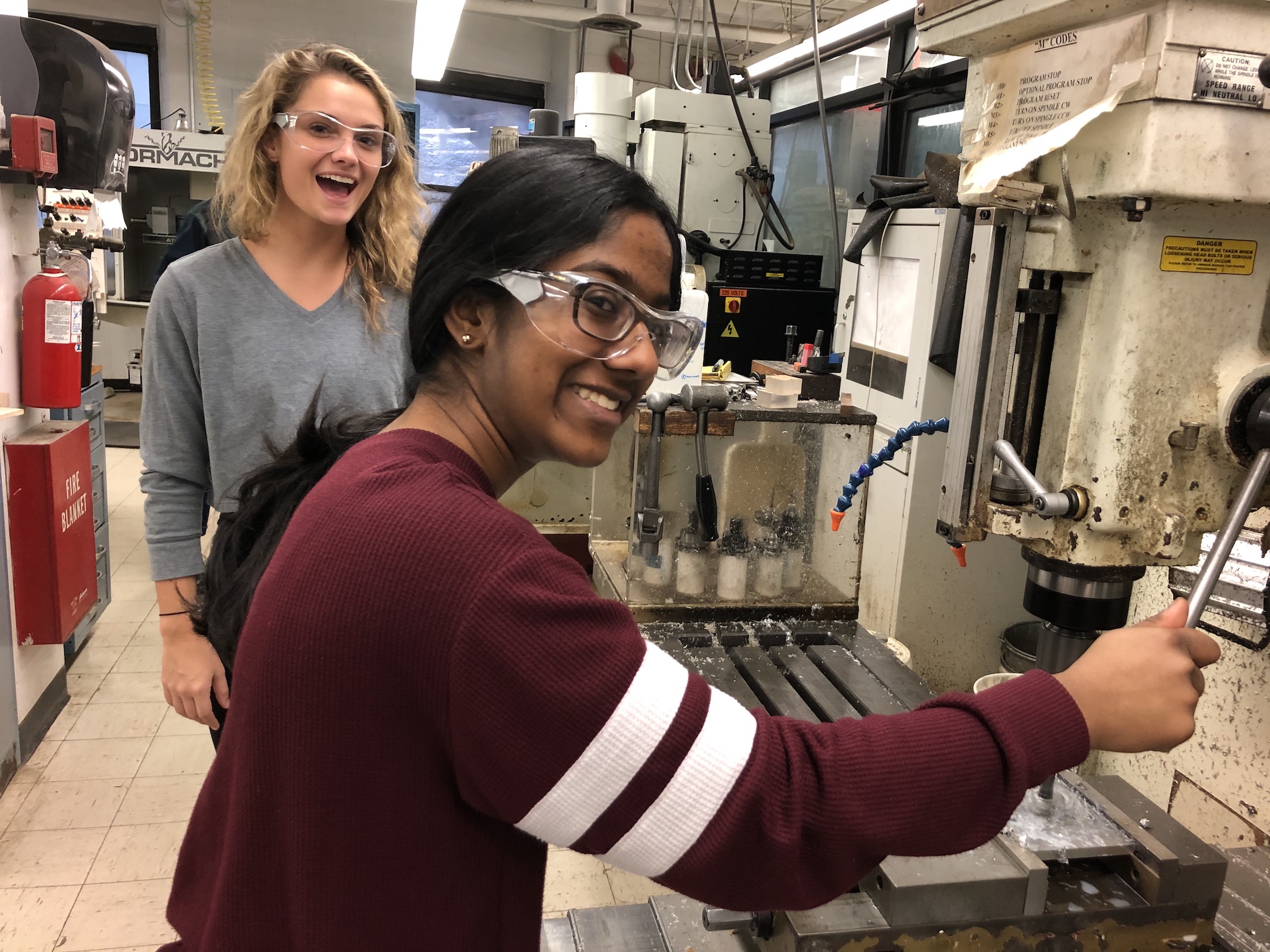
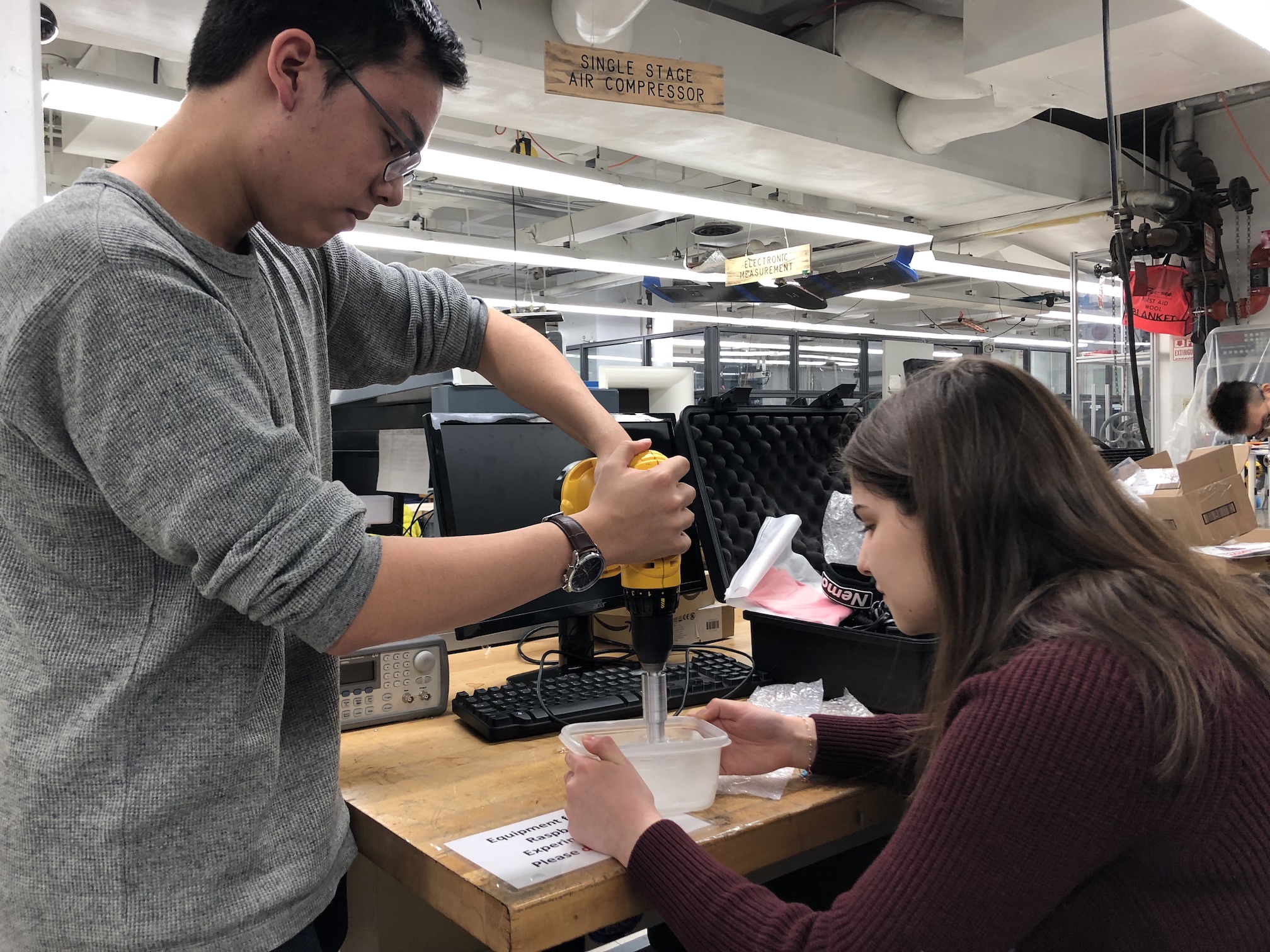
We have been continuing to make steady progress with our design updates and prototype manufacturing, despite being dispersed around the continent due to COVID-19. Our team now meets virtually and will continue our manufacturing process over the summer with the goal of sending our final tool to the NBL for remote testing in early September!
– Micro-g Team
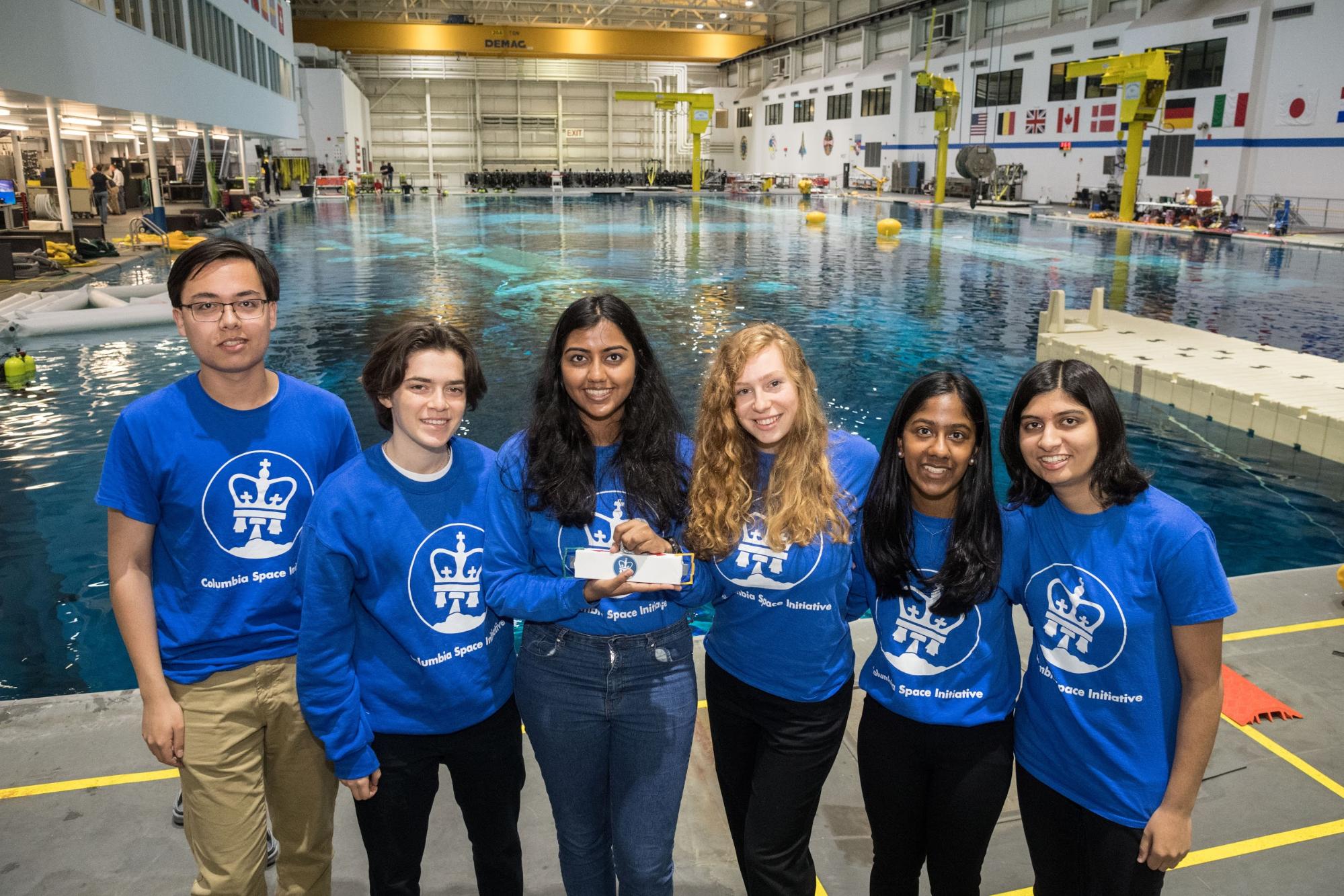
Micro-g NExT is an annual NASA design challenge to design and manufacture a device that functions in a microgravity environment and addresses a problem that astronauts face on either the International Space Station (ISS) or during spacewalks. One such problem is sharp edges on the handrails along the outside of the ISS created by collisions with Micrometeoroids and Orbital Debris. Astronauts rely on these handrails to move around during Extravehicular Activities (EVAs) and sharp edges pose a significant hazard to astronaut gloves. This year’s Micro-g NExT challenge asked us to design a sharp-edge detection and removal device to eliminate the risk of sharp edges on the handrails. This two part device would be required to first detect the specific location of the sharp edge along the handrail and then remove or cover the edge without introducing new safety hazards.
Our device, SHIRLEE (Sharp-Edge Handheld Identifier & Remover in Low-Gravity Extravehicular Environments), shown below, addresses both the detection and removal components of the challenge. The two detection bars protruding from SHIRLEE are shaped to fit the two different curvatures of the handrail faces. When run along a handrail, the detection bar catches on sharp edges and rotates outward which alerts the astronaut of the encountered sharp edge. Beneath each detection bar is a skate stone, which can be accessed once a bar has rotated outward. Skate stones are small blocks of ceramic steel used to reshape and smooth down nicks and sharp edges on the blades of ice skates. SHIRLEE uses these stones in the same way; after detecting a sharp edge, the skate stone can be rubbed against the sharp edge, smoothing down and removing the hazard.
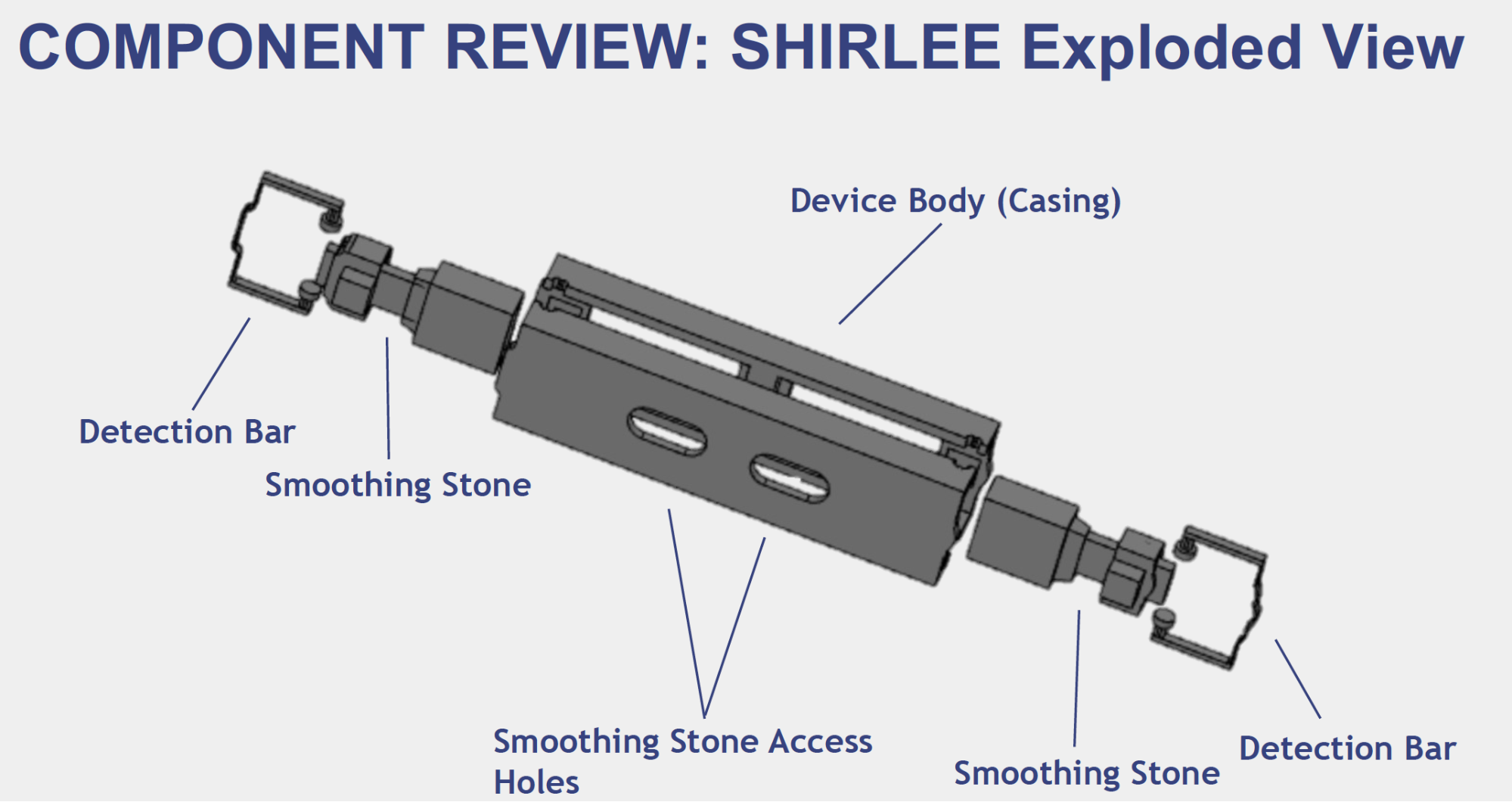
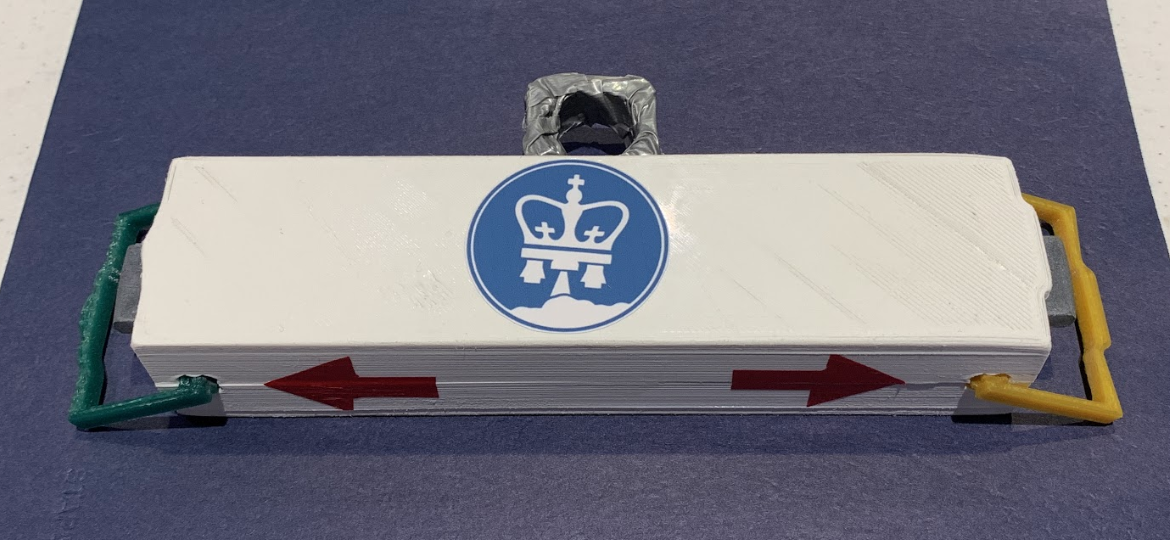
After being selected for the challenge and spending the year designing and manufacturing SHIRLEE, we traveled to the Johnson Space Center Neutral Buoyancy Laboratory (NBL) in Houston, Texas to test the device during our designated Test Week. The NBL is a training facility for astronauts that features a 6.2 million gallon pool. Underwater, it is possible to simulate a microgravity environment and learning to navigate this environment is an essential part of astronaut training. In addition, the pool contains a replica of the ISS, which astronauts use to train and prepare for spacewalks. Functionality in a microgravity environment is not only crucial for astronauts, but is also an essential requirement for the tools astronauts take with them. The purpose of our test week was for an NBL diver to test SHIRLEE underwater to see how it would perform in a microgravity environment.
Our first day at the NBL was focused on safety. To ensure diver and astronaut safety, every material or device to enter the pool must be thoroughly reviewed. After meeting the other teams, the divers, and the safety review board, we presented our Test Readiness Review, providing an overview of SHIRLEE and how we addressed each potential safety concern in the design of our device. SHIRLEE was approved for testing the next morning and we finalized our operations plan (the step by step directions we read to the diver during testing).
Our test took place the next morning. First, we had a poolside check-in with our diver, Emily, to make sure she understood the basics of the device and how it should be handled. Once in the control room, team member Swati read the operations plan to Emily over a two-way radio while watching the test in real time on several monitors. Our test was a success! SHIRLEE detected and removed several sharp edges on a test handrail and the diver gave us very positive feedback, describing SHIRLEE as very effective and ergonomically easy to use.
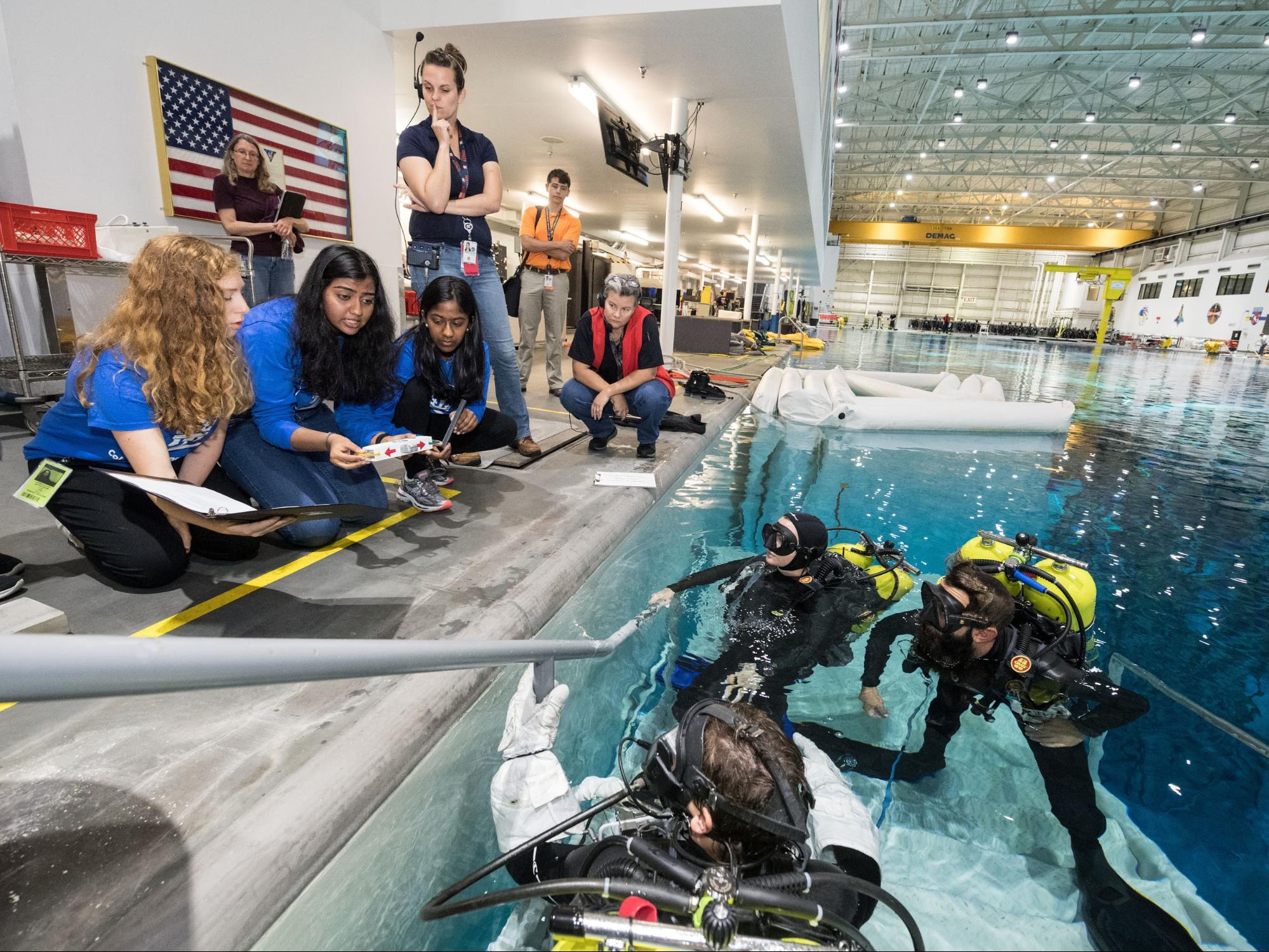
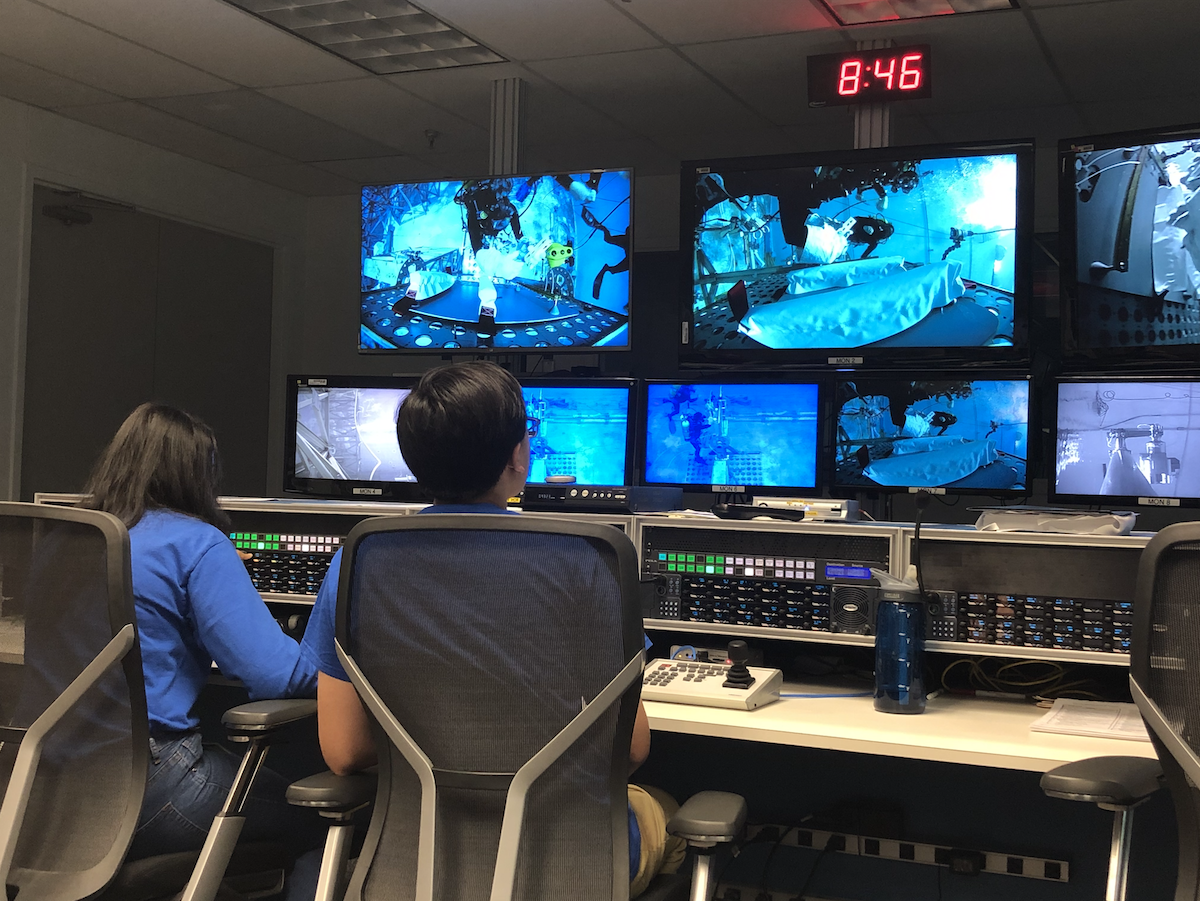
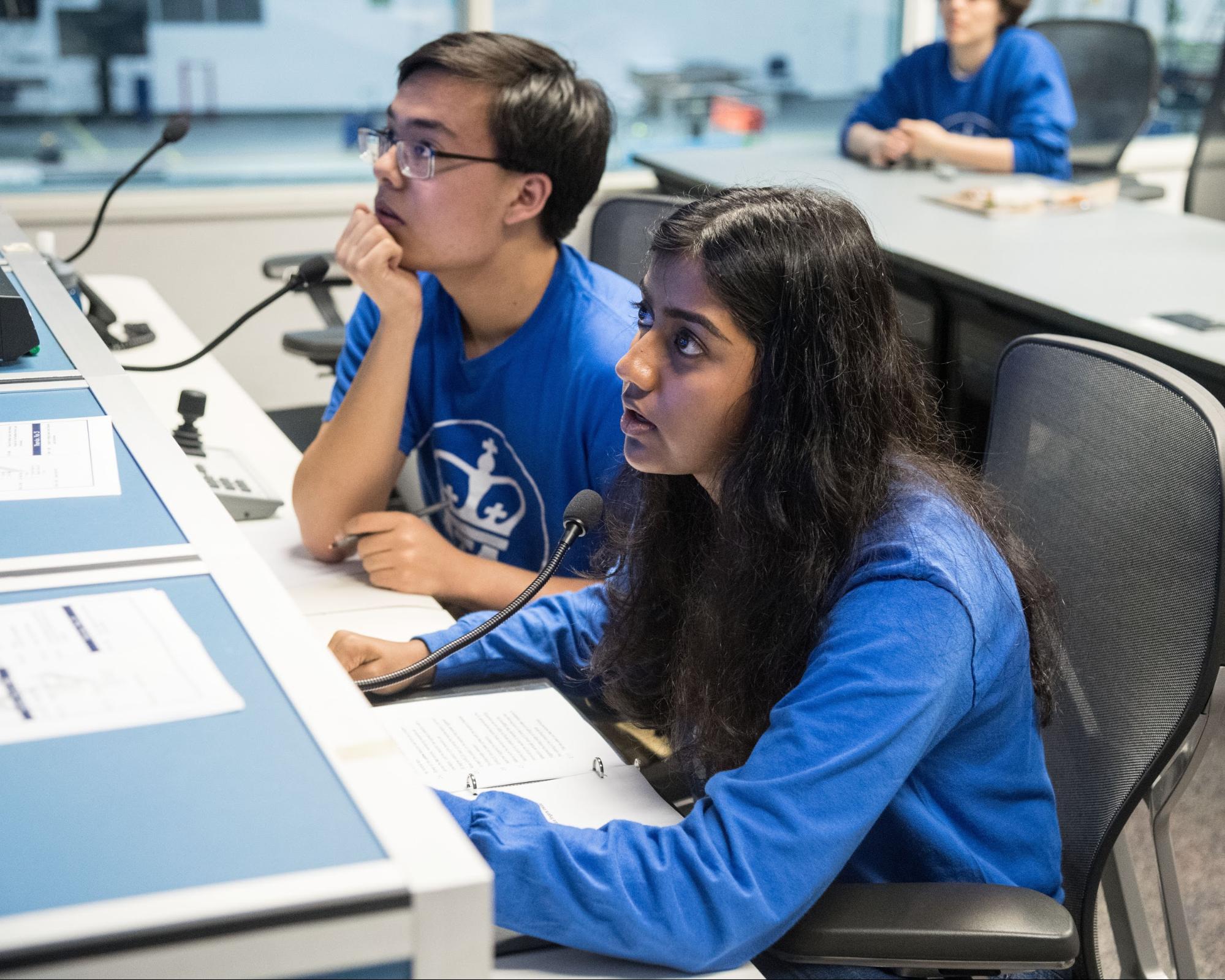
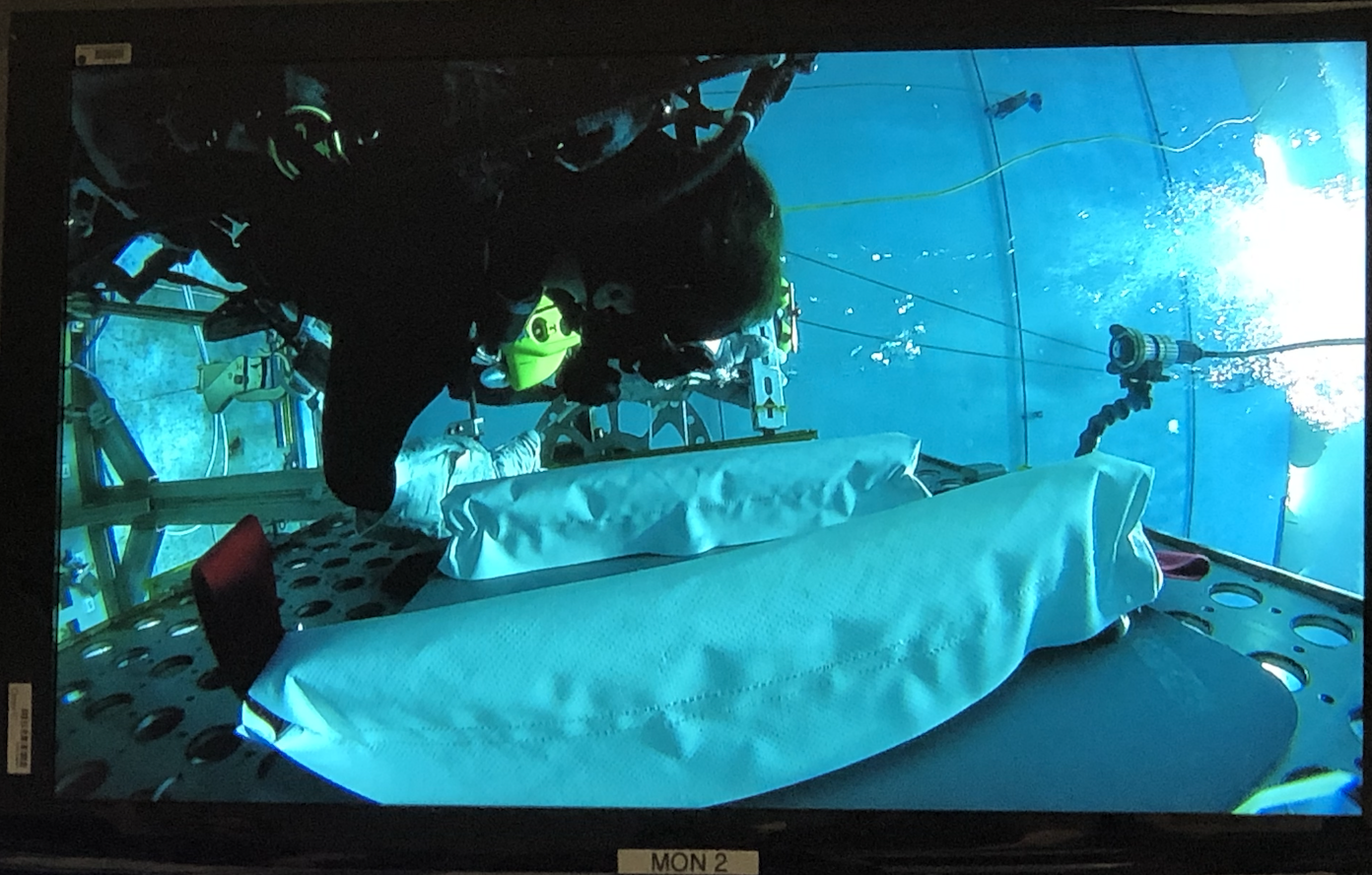
We spent the remainder of the trip compiling testing feedback, touring the Johnson Space Center (JSC), learning about other teams’ designs, and presenting our results. From seeing mission control to learning about suit and tool design from JSC engineers, we had the opportunity to see many crucial aspects of NASA firsthand. We also made some time for team bonding, celebrating a successful year with some movies, bowling, and karaoke. Both the yearlong mission and its culmination during test week were incredible and we can’t wait to see what’s in store for next year’s Micro-g team!
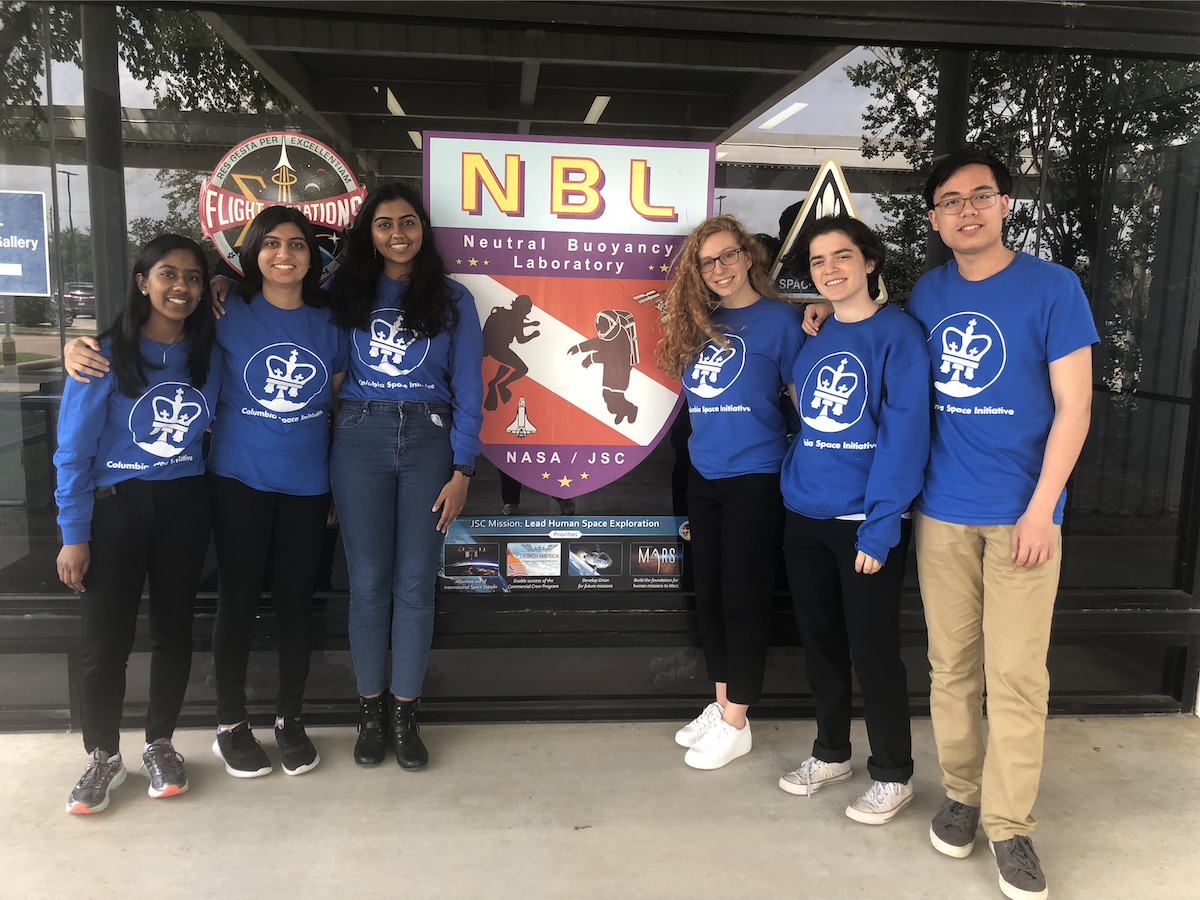
– Team Lion Edge
When astronauts step into space, they enter an environment in which sharp objects are an immediate threat. With highly pressured suits, the slightest wear on a glove can be dangerous, compromising the entire space suit’s integrity. As a result, astronauts at the international space station must take extreme precaution when exiting their ships for space walks. They rely on handrails which help them maneuver outside the ISS. These handrails, which make direct contact with each astronaut’s glove, are susceptible to developing sharp edges, due to the impact of Micrometeoroids and Orbital Debris.
To remedy this problem, NASA has proposed a design challenge. The objective of this challenge is to design a method for both detecting sharp edges and removing sharp edges from an Extravehicular Activities handrail.
When it came to actually sketching a prototype our team recognized the following constraints: The device must be easy to use. Since the astronaut will be wearing clunky gloves, we could not design anything that required intricate handling by the user. Because the device will be tested at the Neutral Buoyancy Laboratory, it must work underwater. This means we have to be very cautious about the materials we chose. The device must work on all three faces of the handrail, each of which is shaped differently. As a result we designed parts that are fitted to the varying concavity of each of the faces.
Our device utilizes detection bars that slide along the face of the handrail and fit the face’s curvature. When a sharp edge appears on the handrail, the bottom section of the bar is thin enough that it will catch on any sharp protrusions it comes in contact with. When caught, the entire detection bar will be pushed in against two compression springs. As the device continues to move, the latch located on the detection bar will release its grip on a trigger flap, enabling this flap to pop up. This signals the presence of a sharp edge.
When a sharp edge is detected, a red signal appears. This tells the astronaut to lift the device from the railing and move the detection device to the side, which will reveal nozzles that contain fast drying covering paste. As the astronaut depresses the plunger, covering paste is squeezed onto the bar. The astronaut can then drag the device over the area covered to help smooth the covering paste across the face.
A current design challenge for our team is to design a better way for astronauts to grip the device. Currently the body of the device is cubic and requires astronauts to grip around the body’s edges. We plan to create a covering grip, or shape the body differently, so that is better suited to the shape of the astronauts glove and relies less on grip strength.
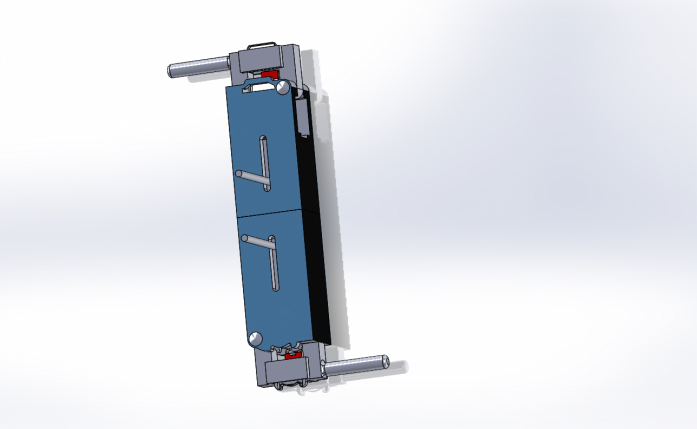
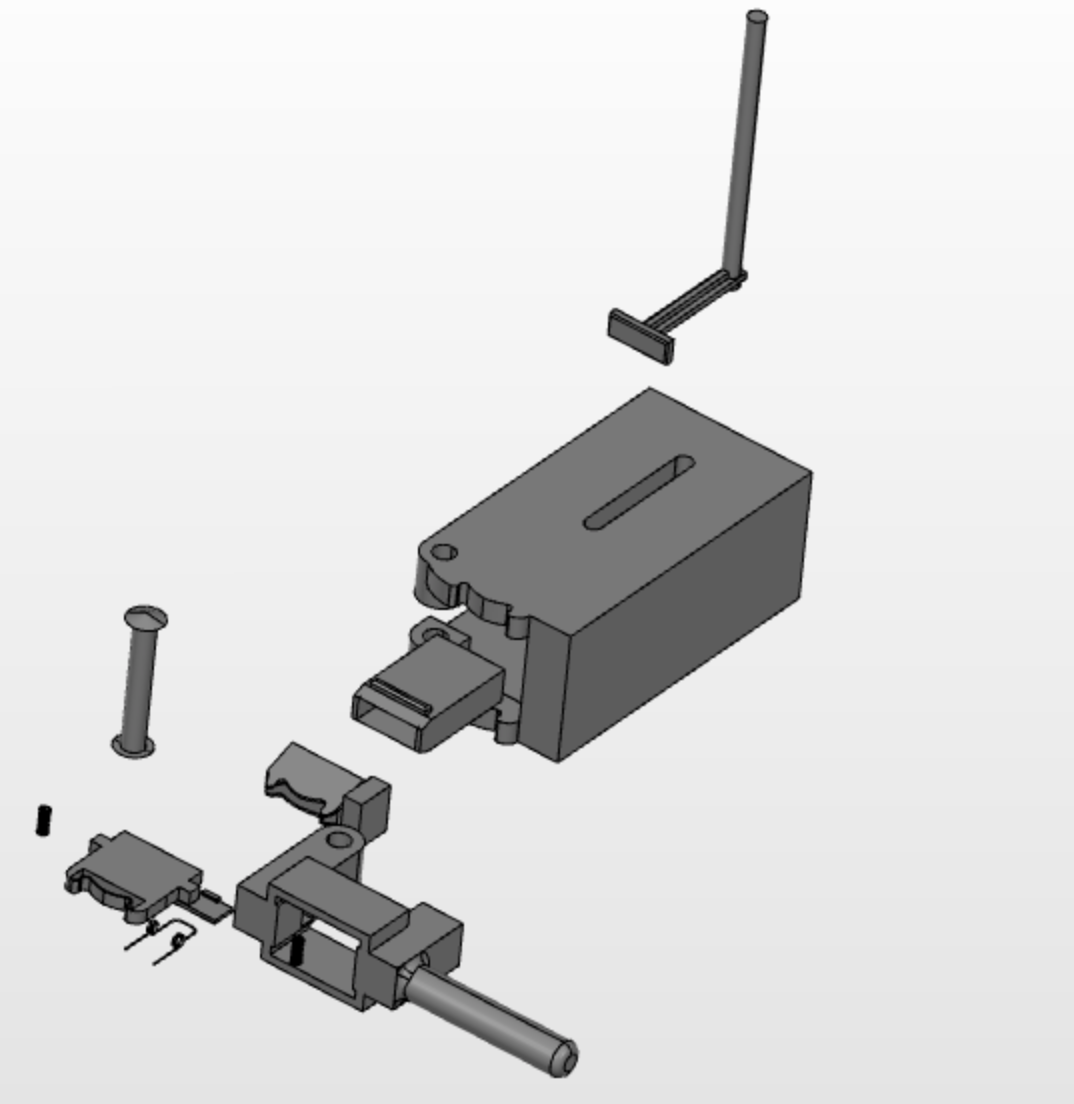
As of now, we are moving from the design phase into the prototype phase. We are currently pending acceptance for NASA’s competition at the Johnson Space Center this spring! Wish us luck :)
– Micro-g Team
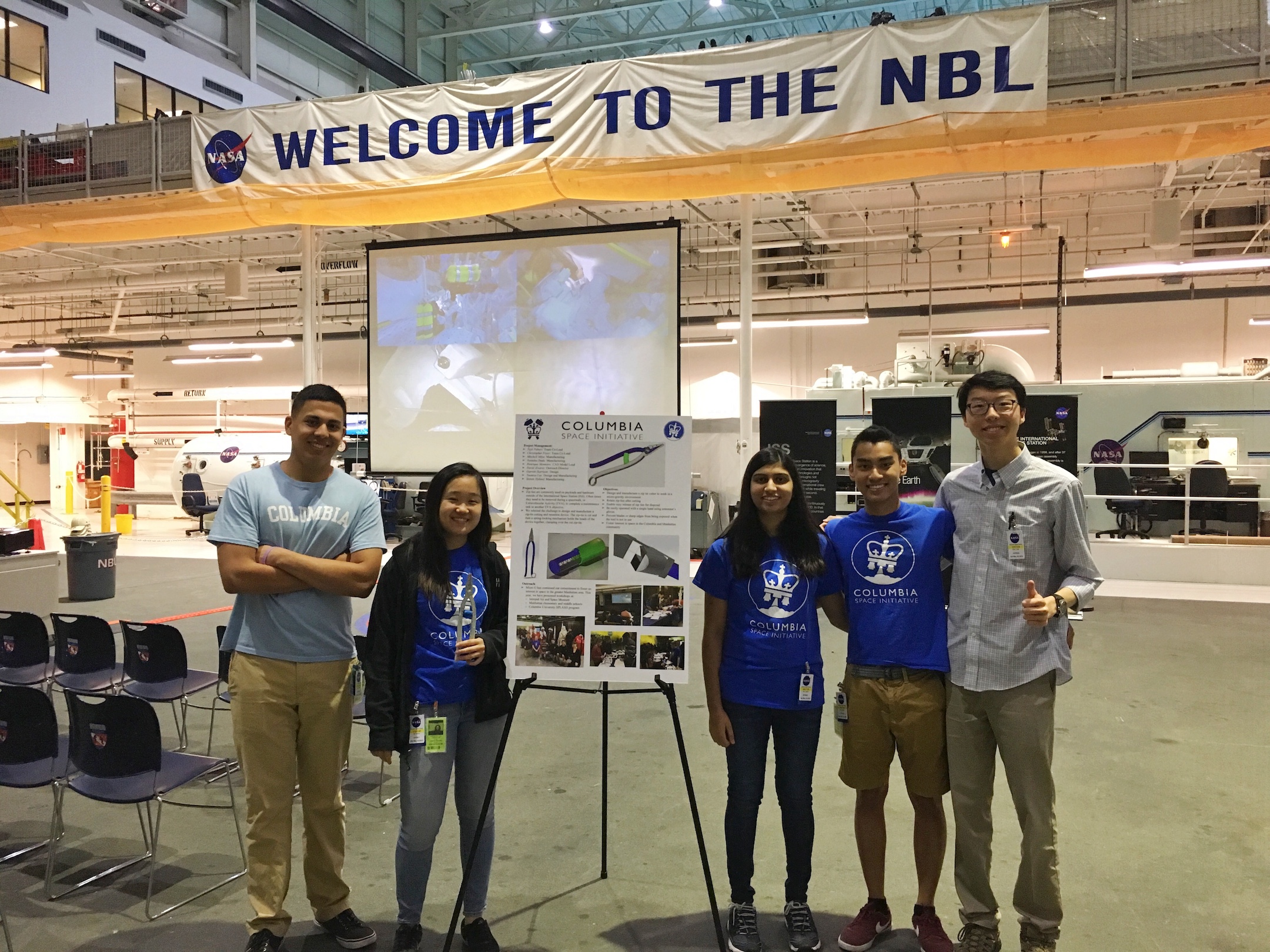
The obvious attraction of the Micro-G NExT project is certainly the test week at Johnson Space Center in Houston, Texas. This was what initially drew me to the project in September 2017, but what most people don’t initially look at is the year-long process as a whole. From picking a design challenge to drafting our proposal to eventually testing at the Neutral Buoyancy Lab (NBL), it was an invaluable experience that taught our whole team the value of hard work and collaboration.
Up until we were selected to go to Johnson Space Center in December, the whole process felt very surreal. It still hadn’t hit for many of us that we were actually doing important work that would be considered seriously by NASA. However, when the decision came in, the nature of the whole process changed. Rather than design, we had to focus now on creation. A lot of us were freshmen, which meant we had to learn many different aspects of machining very quickly. The learning curve was steep, but with frequent meetings and countless hours in the MechE shop, we were able to get everything down.
The crux of our device, the spring-lock mechanism, was what really set our initial designs apart from the final product. Cutting zipties was one challenge but being able to retain and dispose of them properly, thereby not allowing them to become more space junk, was something else entirely. Part of this solution was the rubber lining along the bottom clamp of the head of the device, but the other was the spring-lock mechanism. This would lock the device into place once the clamps were closed, keeping the cut ziptie between the two head clamps, and could only be opened again by pressing a lever on the bottom of the mechanism. Other than the machining of the other parts, getting this to work was a huge focus of our project going into the second semester.

Our actual testing experience at the NBL was absolutely incredible. Being able to go past some of the more tourist-oriented parts of Johnson Space Center to really get into the meat of what happens there was a privilege. Even before the actual testing of the device, we were able to meet with several divers, researchers, and other NASA staff. They gave good feedback on the design of our device before and after testing and offered help and guidance along every step of the way. We had a Test Readiness Review (TRR) the first day we were there, during which we talked about how to operate the device and any safety hazards we could find. All of the NASA staff gave very constructive feedback and helped us make the modifications necessary to have a successful test the next day.
Micro-G NExT was an amazing experience, and one that we will all remember. There is a certain part of one’s engineering education that simply can’t be replicated in a classroom and being able to have that, while also doing valuable work for NASA, was an absolute privilege. For next year, I would like to see the Micro-G NExT team continue to pursue an invite to the NBL, and to allow more buffer time for machining issues. A big problem we faced was not allocating enough time for problem we’d run into during manufacturing, and this ended up making things kind of tight in the end. Being a part of this project was amazing, and I look forward to seeing what next year’s team will accomplish!
– David Alvarez
The Micro-G teams for 2016 and 2017 did amazing work and we hope to follow un their footsteps!
We’re extremely excited to introduce this year’s Micro-G team!
Zip ties are commonly used on payloads and hardware outside of the International Space Station (ISS). Often times they need to be removed during a spacewalk, or Extravehicular Activity (EVA), to complete a maintenance task or another EVA objective. These zip ties could be anywhere on the payload, including smaller spaces that are hard to reach. Since this occurs in microgravity, the zip tie needs to be captured once removed to keep it from floating away and potentially causing damage to the ISS or another piece of hardware.
Our mission is to design and manufacture a novel zip-tie cutting and retention device for use during an EVA. We dub our design: The Lion Cutter.
The mission co-leads are Tejit Pabari (SEAS ‘21) and Christopher Fryer (SEAS ‘19). The team members are: Yuanxia Lee (CC ‘18), Garrett Harrison (SEAS ‘21), Megan Noga (SEAS ‘20), Henrique Monteiro (SEAS ‘21), Mitchell Miya (SEAS ‘21), David Alvarez (SEAS ‘21)
We spent weeks brainstorming designs and drawing rough schematics of our ideal device design, and submitted our finished proposal to NASA. Here are some preliminary CAD drawings that we included in our proposal:

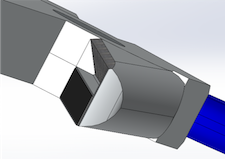
In December we received the amazing news that our proposal had been accepted!
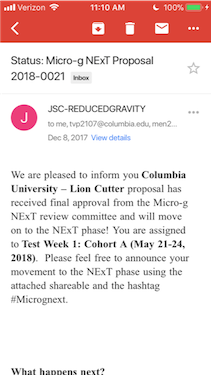
We will now join 21 other undergraduate teams at the Neutral Buoyancy Lab in the spring!
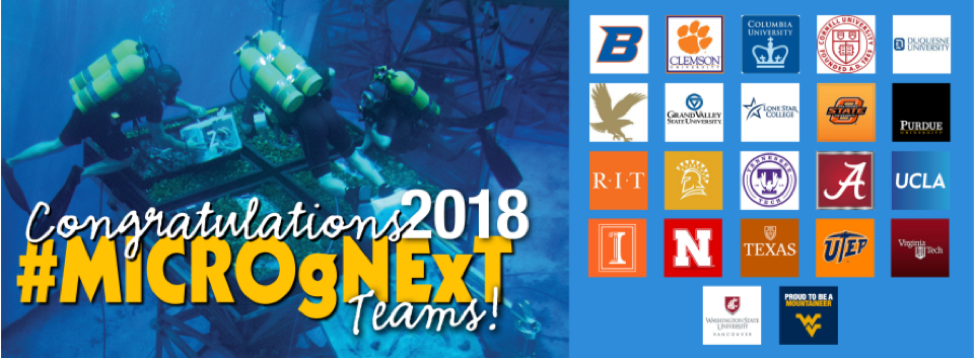
We are modifying our design to include a spring-locking mechanism, which will keep the device closed during zip-tie retention without needing for the astronaut to continually hold onto the device. Here is a preliminary CAD drawing of said modification:
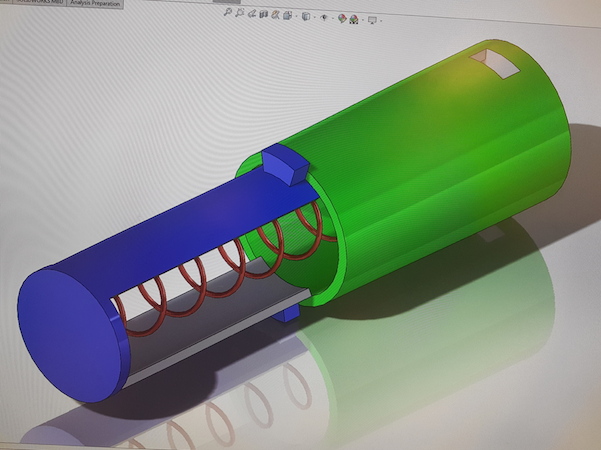
We hope to begin manufacturing soon.
-Chris and the entire Micro-G team
This is an exciting time for the Micro-g team. We’ve been hard at work over the past couple of weeks, planning and running our outreach events, making design improvements, and even prototyping!
A few weeks ago, we met our advisor from NASA (via web video), who will be helping us through the final stages of our product development and testing. Before the meeting, our mission co-leads 3D-printed the first prototype of the sample tube in our device.
 AsadAndMike.jpg)
We were even able to take a photo of the full team, thanks to a little help from web video!
 TeamPhoto.jpg)
Lately, our design improvements have been focused on optimizing the turbine driving the drill using a new “planetary gear” system. Check out one of our sketches below:
 Sketch.jpg)
We’ve also begun prototyping the Iris Mechanism at the bottom of our drill. The mechanism contains many small parts, so printing it was a little tricky. However, our second attempt looks much more promising.
 OpenIris.jpeg)
 ClosedIris.jpeg)
We’re going to continue to improve our design, and soon we’ll start machining our drill!
 Our team has been having an incredible amount of fun planning and running our outreach events over the past few weeks. We’ve been spending a lot of time at various kids’ science events, teaching them about space technology and our project, and encouraging them to go into STEM fields so they can also contribute to our exploration of the final frontier! Here are some of the highlights from our outreach events at the Intrepid Air and Space Museum, Liberty Science Center, and Manhattanville Community Center.
On Friday, February 24, we ran a workshop at the Intrepid’s Kids’ Week.
 IntrepidWorkshop.jpg)
We talked to them about parachutes—how they work, how they’re made, and their role in bringing astronauts back to Earth safely. Then, we guided them through the process of making their own parachutes, and everyone had a blast!
 Parachutes.jpg)
  On Saturday, February 25, some brave souls among us woke up at the crack of dawn to make the trek to Liberty Science Center in New Jersey. They explained our project to the kids, and demonstrated basic principles of energy by simulating asteroids hitting planets and making craters. 
 LSCWorkshop.jpeg)
It got a little messy, but everyone loved it!
Finally, this past Friday, March 4, we ran our first of four workshops at Manhattanville Community Center. The parachute activity was repeated to great success.
 Manhattanville1.jpg)
 Stay tuned for more updates!
If you’ve followed CSI news, you’ll know that last year’s Micro-G team killed it. The team entered NASA’s design challenge to build a near-Earth asteroid anchoring device, and after months of work produced the “Lion Claw”, which passed with flying colors during testing at NASA’s NBL.
We’re very excited to introduce this year’s Micro-G team! We’ve already been hard at work on our mission since September; in fact, we’ve been working so hard that news updates have taken a backseat to our constant efforts to improve our design. But not to fear! Without further ado, we’d like to present Micro-G NExT 2017!
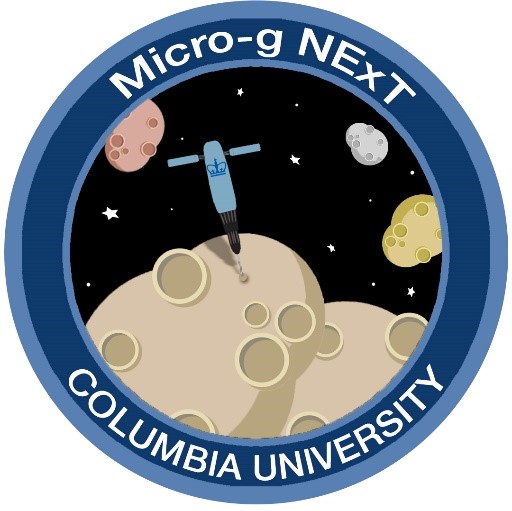
Our logo, designed by Maggie Fei
It was September, and this year’s Micro-G team clearly had a lot to live up to. Since Columbia’s previous team had already conquered the asteroid anchoring device challenge, we chose to enter a different Micro-G mission: the Subsurface Sampling Device challenge.
NASA is currently working on systems to take humans beyond Low Earth Orbit to explore the solar system. Some of the destinations of interest are celestial bodies with milligravity to microgravity.
A sample type of interest to scientists is a subsurface sample. Subsurface samples can showcase the history of the body and describe its internal structure.
Our mission: To design and manufacture a device that enables an astronaut to obtain a subsurface sample (core sample) in microgravity.
Our mission is co-led by Asad Saleem (SEAS ’20) and Mikhail Karasev (SEAS ’20).
The team members are:
Alex Kim (SEAS ’20), Ben Kepecs (CC ’20), Francesco Zampetti (SEAS ’18), Karina Yeh (SEAS ’20), Kevin Le (SEAS ’20), and Robert Kydd (SEAS ’18).
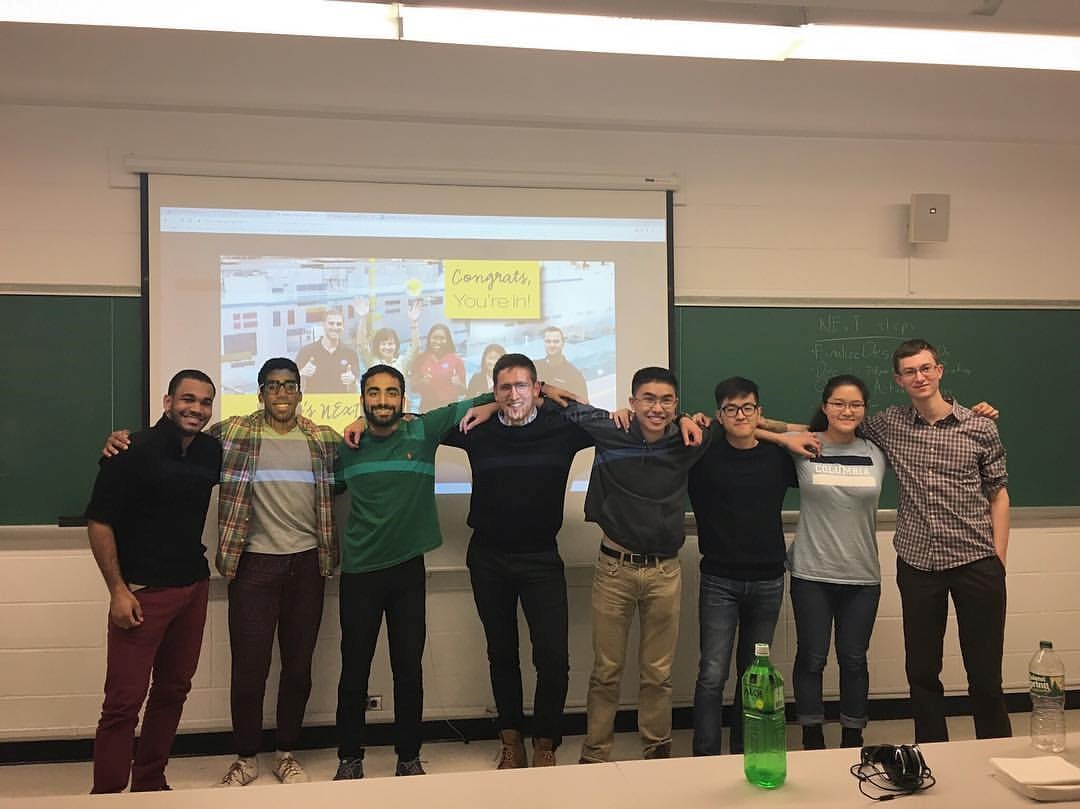
Our first step was to draft and submit a design proposal to NASA. We spent several weeks brainstorming drill designs, filling chalkboards with designs, ideas, measurements, and the inevitable modifications.
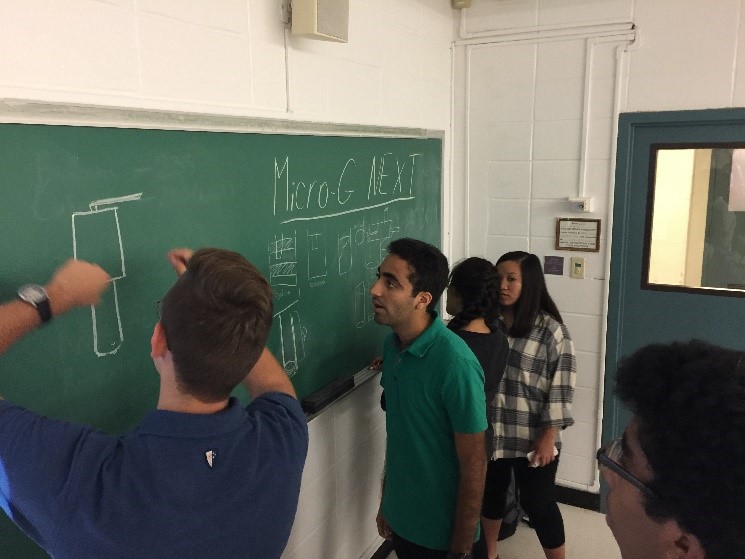
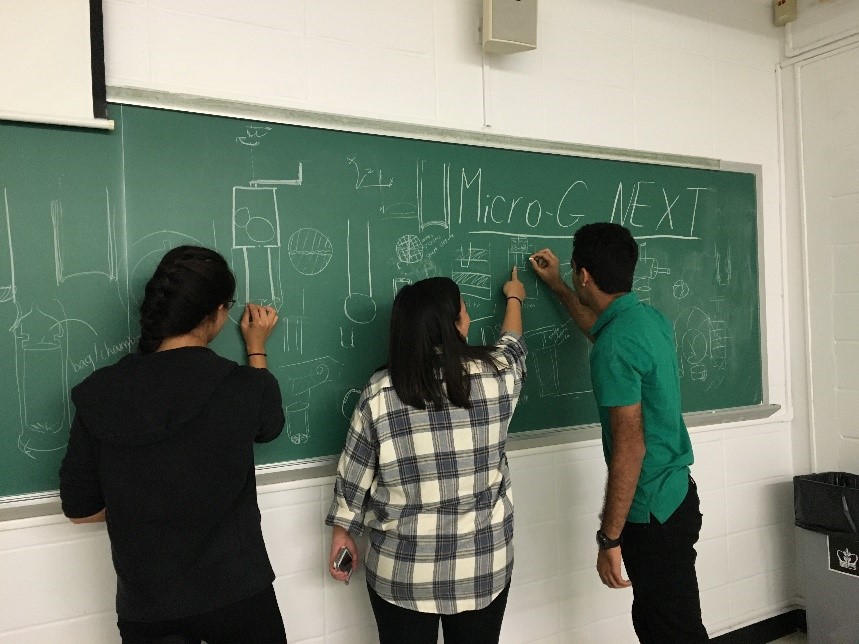
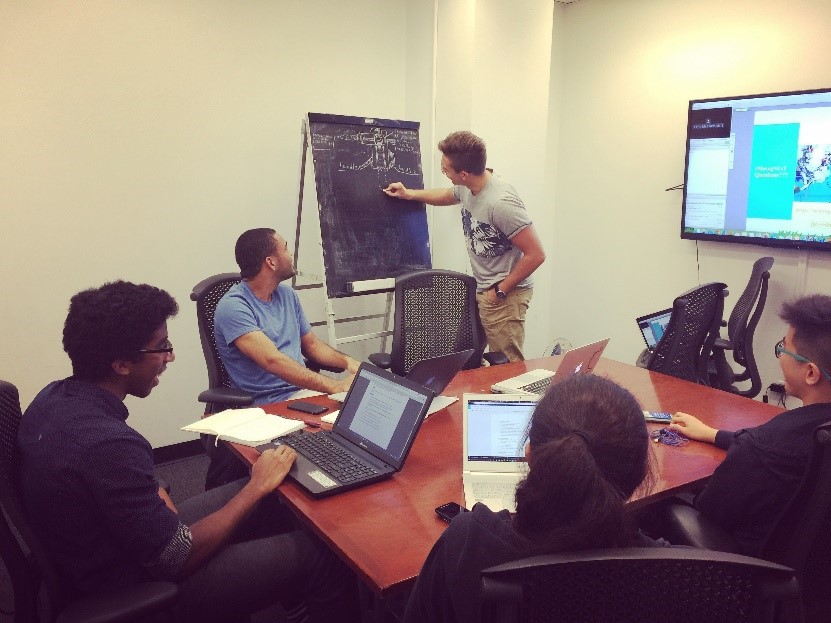
Complicating our design were the criteria that the device had to be able to drill around a cylindrical core sample of either sandstone or sand, and also somehow seal at the end to prevent the sample from falling out. We took some inspiration from already extant ice-corers, which are designed to drill down into polar ice to collect core samples. We decided that a pneumatically powered device was our best bet to drill through sandstone, and discovered an interesting mechanism that we could use to close the end of the collection tube, an Iris Mechanism. After a lot of work, we finished the first draft of our design and submitted our proposal. Check out the animation below showing how our device works, using a model imported from our CAD assembly.
Finally, in December, we received some great news: our proposal had been accepted!

This meant that we would now actually manufacture our device and test it at NASA’s Neutral Buoyancy Laboratory in Houston, Texas, alongside teams from 29 other universities.

Now, we’re putting the final touches on our design, and we hope to start manufacturing it soon.
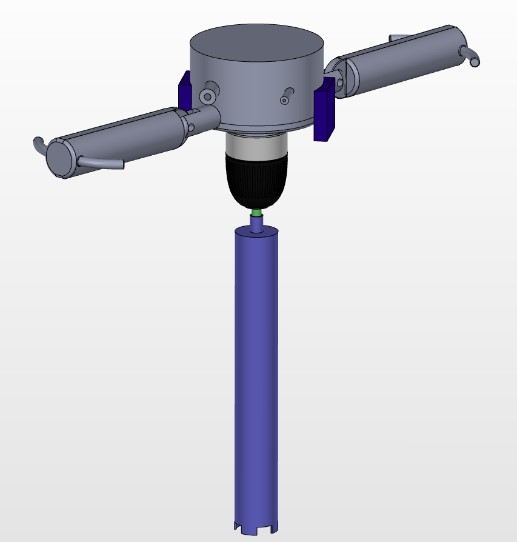

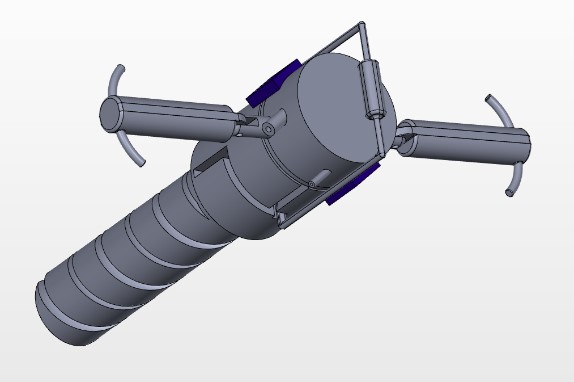
Some of our latest CAD models.
Left - the version for sandstone collection; right - the sample tube; below - the model for sand collection.
We are also coordinating our outreach activities at Liberty Science Center, the Intrepid Air and Space Museum, and various schools throughout New York City. We are very excited about these events and the progress that we have made, and we hope that you continue to follow us in our mission!
-Ben and the entire Micro-G team

Well, if you follow us on social media you’ll know that we went to Houston last week to test our asteroid anchor. Without further ado, here’s our mission debrief:
We had started this process in December with our initial concept, but quickly realized that our design was impossible to manufacture. Starting anew, we had another design and prototype by March - only to see that it had failed to hold the 10 lbs of force during testing.
Into this week were betting on a new design and scrambled to manufacture and test it. Kristina and Tamás, our team leads, had many a sleepless night over the anchor. We had only tested the anchor underwater a few times before making the trip to Houston. Although the anchor had worked in our underwater test, we were still understandbly nervous about the anchor - would it work in the NBL? would it pass NASA’s stringent safety inspection?

But to our delight, our anchor did pass - in all respects. On our first day in Houston, we had our Technical Readiness Review, in which we proved to NASA specialists that our tool was safe for use in the NBL. After some filing of sharp edges and softening wire tips, we were good to go.
The second day in Houston was our test day; we were scheduled for a 9:10 a.m. test, though in actuality we started ten minutes later. Jordi was TC (Test Controller), and directed the divers in realtime on how to operate the tool. I also livestreamed the event on our Facebook page; it’ll also be on YouTube soon.
We held at least 30 lbs of force, even though NASA only required us to hold 10 lbs of force. The divers themselves even said that this was one of the strongest designs there. With the anchor only half-deployed (only the bottom plates deployed), we held the requisite 10 lbs of force. Suffice to say, we’re pleased with how well testing turned out!
We also won the social media prize, and got a special tour of Building 9, which is the Space Vehicle Mockup Facility. We touched the actual ISS mockups that astronauts used to train!
First of all, thank you to everyone who contributed to this mission. Kristina and Tamás were amazing team leads, both of whom entirely determined the success of the project, and deserve every accolade. Brian also is a standout with SolidWorks, and Jordi is our finance master - without which we wouldn’t have had the money to make this trip possible.
Meanwhile, check out our vlog series on YouTube to get a sense of what our trip was like.
Finally, we hope to continue the Micro-g NExT program next year. We had a blast doing it, and Kristina and Tamás will be able to stay on as advisors for future participants from Columbia.
-Julia, Micro-g Logistics/Everything
Hey y’all,
It’s an exciting week for us on the micro-g team here at csi! We’ll be going to Houston next week to test the LionClaw, our design for a microgravity anchor. The anchor would theoretically be used by spacecraft visiting near-Earth asteroids, which are essentially asteroids closer to us than Mars is (roughly 50 million miles or less; space scales are weird). Because these asteroids are so small, the amount of gravity we would experience on them would be negligible, so we need an anchor to keep our astronauts on its surface.
NASA has generously provided us and other undergraduate teams the opportunity
to test our anchor at the National Buoyancy Laboratory (NBL). The NBL is a
giant pool where astronauts run simulations or test equipment to mimic the
weightlessness experienced in space and on asteroids! We’re extremely excited
to test our design there!

We’ll be keeping you updated on our progress in Houston as we test the design, but for now, we’ll be working hard in Columbia’s excellent machine shop and makerspace. If you’re in the area, feel free to come and check out our design if you have any questions or would like to see it for yourself! Columbia has kindly provided the resources that have made this design possible, so it is the least we can do in return to the Columbia community.
Look out for Kristina, Tamas, or Brian (pictured below).

-Jordi
Redesigns are underway on our asteroid anchor. Tomorrow (April 8), we will be manufacturing our design changes in the Mechanical Engineering Shop. The Columbia Daily Spectator will also film a behind-the-scenes video of our manufacturing process. Stop by at 1 p.m. with your CSI shirt to appear in our video!
-Julia
It’s 6:55 p.m. (EST) and we have submitted our Technical Equipment Data Package (TEDP) to NASA. It’s 40 pages long and written with lots of love from everyone on the team.
Although submitting the TEDP was a great success, we do have some unfortunate news: our asteroid anchor design doesn’t quite work. We have tested the design and found that the anchor does not withstand the full 10 lbs of force required by the NASA design rules. We’re working on redesigning the anchor, but with only about 40 days before we head to Houston, we don’t have much time for major design changes. It’s not a huge issue though - we’re relatively certain that our mechanical reasoning is solid; we just need more surface area to interact with the regolith.
-Julia
Last few weeks have been super manufacturing-intense! Coming off of spring break, we have most of our body and the inside mechanism ready. We have tested and scrapped some parts and designed and made new ones! Mistakes in machining are inevitable, so we had to remake the plates and the cone, which we finished last week. Next big milestone is the TEDP report due next week!
-Kristina
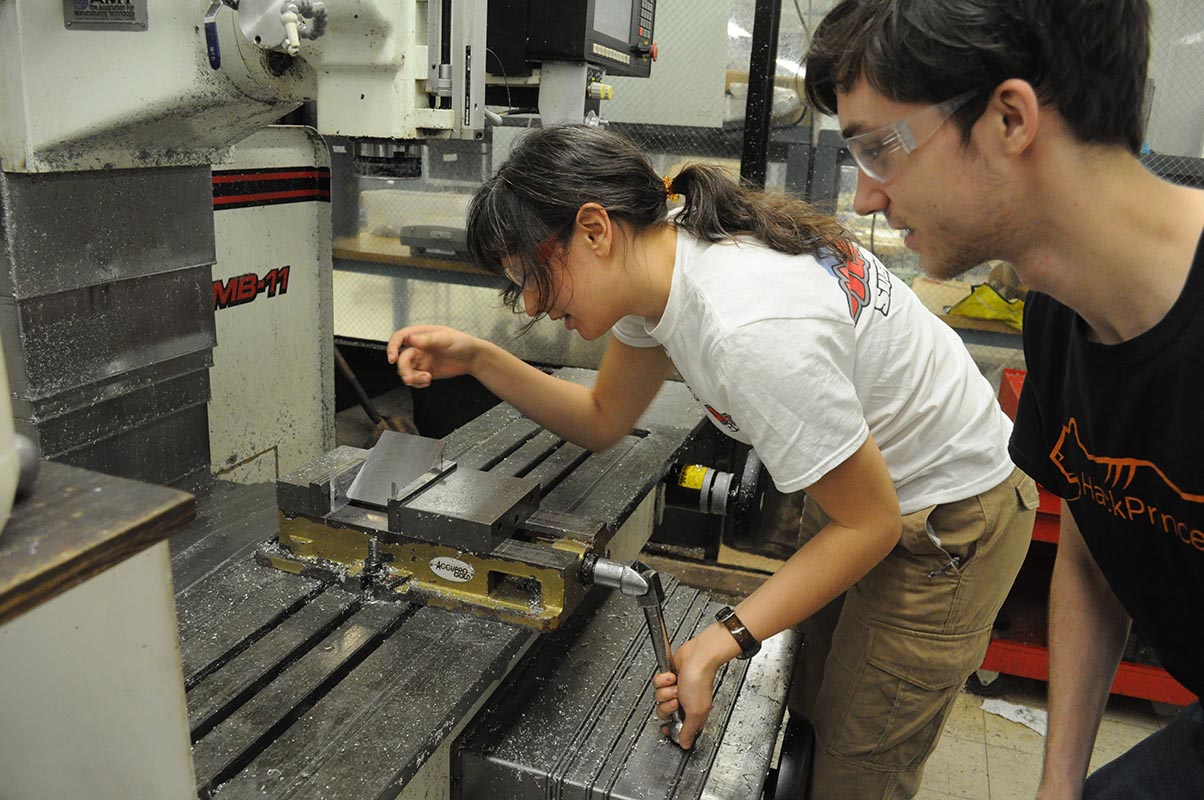

We have submitted our preliminary design to NASA. The final design is an assembly of around 9 parts: the cone, shaft, 5 plates, piston, and blocking bar. The cone piece that is the first part to make direct contact with the surface is threaded for ease of penetration. The shaft serves as the housing for the piston and the plates attached by individual hinges. A person pushing on the piston activates the plate assembly and they slide out of their holes and grip the m_barnes. Our design underwent many changes during the brainstorming procedure. Our inspirations were river anchors, screwpile drills, and the fractal design used on the Rosetta comet.
Kristina, Co-Head of Micro-G Team